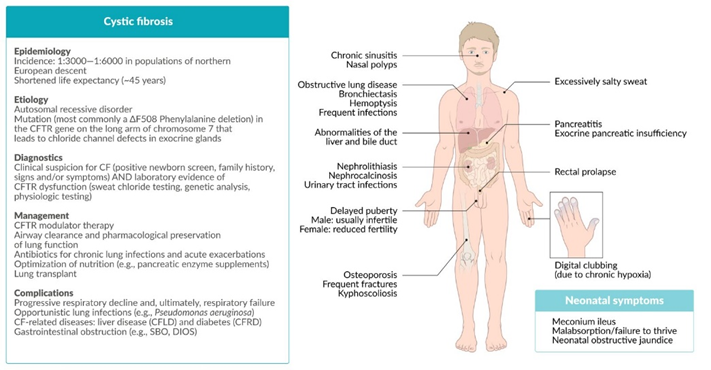A nurse is planning care for a child who has epiglottitis. Which of the following actions should the nurse plan to take?
Obtain a throat culture.
Visualize the epiglottis using a tongue depressor.
Provide moist air to reduce the inflammation of the epiglottis
Initiate airborne precautions.
The Correct Answer is C
A. Obtain a throat culture.
This option is not appropriate as a primary nursing action in the acute management of epiglottitis. While obtaining a throat culture may be necessary for diagnostic purposes, it is not a priority in the immediate care of a child with suspected epiglottitis. The focus should be on ensuring airway patency and providing emergency treatment.
B. Visualize the epiglottis using a tongue depressor.
This option is contraindicated in the acute management of epiglottitis. Direct visualization of the epiglottis using a tongue depressor or other instruments can provoke spasm of the epiglottis and worsen airway obstruction. Attempting to visualize the epiglottis should be avoided until the child's airway has been secured in a controlled environment, such as in the operating room under anesthesia.
C. Provide moist air to reduce the inflammation of the epiglottis.
This option is appropriate. Providing moist air, such as humidified oxygen or a cool mist, can help soothe the inflamed tissues of the epiglottis and upper airway. Moist air may help alleviate discomfort and reduce inflammation, although it will not directly address the risk of airway obstruction. It is often used as supportive therapy in conjunction with other interventions.
D. Initiate airborne precautions.
This option is not necessary for the care of a child with epiglottitis. Epiglottitis is not typically transmitted through airborne droplets. The priority in the management of epiglottitis is ensuring a patent airway and providing appropriate treatment to reduce inflammation and prevent complications.
Nursing Test Bank
Naxlex Comprehensive Predictor Exams
Related Questions
Correct Answer is C
Explanation
A. "Your child's diet should be high in carbohydrates & proteins with no restriction of fats."
This statement is not entirely accurate. While it's true that children with cystic fibrosis often require a diet that is higher in calories and protein to support growth and weight gain, there is typically a need to restrict fat intake. Pancreatic insufficiency, which is common in cystic fibrosis, can lead to malabsorption of fats and fat-soluble vitamins. Therefore, a dietitian may recommend enzyme replacement therapy and a diet that is moderate in fat but high in calories and protein.
B. "Limit your child's intake of sodium to avoid complications."
This statement is not accurate. Cystic fibrosis can lead to excessive loss of salt in sweat, which can contribute to dehydration and electrolyte imbalances. Therefore, limiting sodium intake can cause electrolyte disturbances.
C. "A pigeon-shaped chest might become evident as the disease progresses."
This statement is accurate. Cystic fibrosis can cause chronic lung infections and inflammation, leading to structural changes in the chest over time. One common manifestation is a barrel-shaped or "pigeon-shaped" chest, which can occur as the disease progresses. This may result from hyperinflation of the lungs due to air trapping and chronic respiratory compromise.
D. "Administer a bronchodilator to the child after chest percussion therapy."
This statement is not necessarily accurate or applicable to all cases. Bronchodilators are medications used to help relax and open the airways in conditions such as asthma or chronic obstructive pulmonary disease (COPD). While bronchodilators may be part of the treatment regimen for some individuals with cystic fibrosis, their use after chest percussion therapy would depend on the individual's specific respiratory symptoms and treatment plan. It's important for the parents to follow the healthcare provider's instructions regarding medication administration.

Correct Answer is A
Explanation
A. "Has your son had a sore throat recently?"
This question is relevant because acute rheumatic fever often occurs as a complication of untreated or inadequately treated streptococcal throat infection (strep throat). A recent history of sore throat could indicate a preceding streptococcal infection, which is an important predisposing factor for the development of acute rheumatic fever.
B. "Was your son born with this cardiac defect?"
This question is less relevant in the context of acute rheumatic fever. Acute rheumatic fever is not a congenital heart defect; it is an inflammatory condition that affects the heart valves following streptococcal infection. While it's important to assess the child's cardiac health, asking about congenital heart defects may not directly relate to the current condition.
C. "Are you aware that your son will have to be in isolation?"
This question is not applicable to acute rheumatic fever. Acute rheumatic fever is not a contagious condition that requires isolation. It is an autoimmune response triggered by streptococcal infection and does not pose a risk of transmission to others.
D. "Has your child had any injuries recently?"
Inquiring about recent injuries is not directly related to acute rheumatic fever. Acute rheumatic fever is an inflammatory condition primarily triggered by streptococcal infection and is not caused by physical injuries.
Whether you are a student looking to ace your exams or a practicing nurse seeking to enhance your expertise , our nursing education contents will empower you with the confidence and competence to make a difference in the lives of patients and become a respected leader in the healthcare field.
Visit Naxlex, invest in your future and unlock endless possibilities with our unparalleled nursing education contents today
Report Wrong Answer on the Current Question
Do you disagree with the answer? If yes, what is your expected answer? Explain.
Kindly be descriptive with the issue you are facing.
